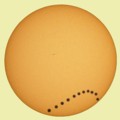 Essen 2004 Essen 2004horizontal view |
Internet ProjectObserving, Photographing and Evaluating theTransit of Venus, June 5/6th, 2012 |
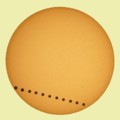 Essen 2004
Essen 2004equatorial view |
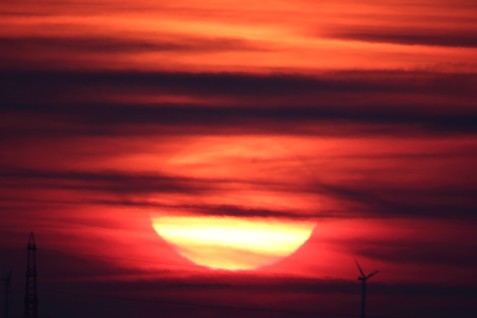
Sunrise in Hannover, Germany, shortly before cloudes cover the Sun
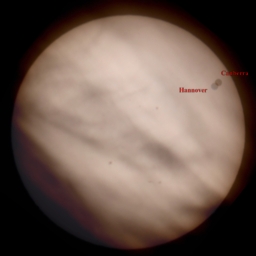 |
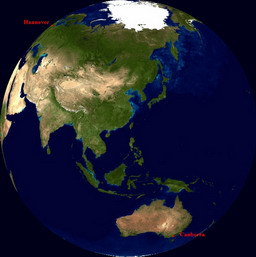 |
|---|---|
| Superposition of simultaneously taken pictures taken in Hannover, Germany, and Canberra, Australia |
The corresponding daylight side of the Earth, the "view" from the Sun to the Earth |
The outcomes can be viewed on the result pages of the photography project and the contacttimes project.
On June 5/6th, 2012, between 10.09 pm and 4.49 am UT a black spot slowly crossed the sun's disc. This transit was observable from all places on the daylight side of the Earth.
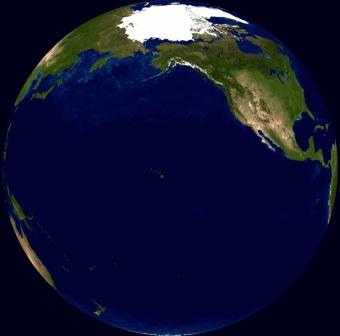 |
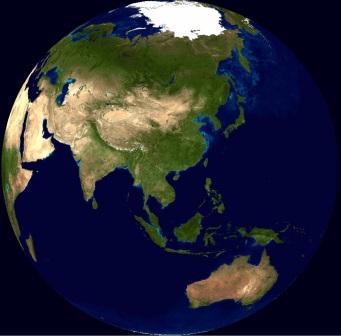 |
| 10.09pm UT | 4.49m UT |
The above pictures show the countries from where the begin (left) and the end (right) could be observed, respectively. (For more information about the visibility click here.)
This extremely rare phenomenon was caused by Venus overtaking the Earth exactly between Sun and Earth. Therefore, it is called a transit of Venus.
The transit could be observed by ...
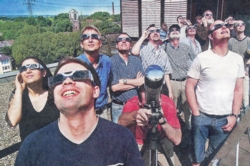 |
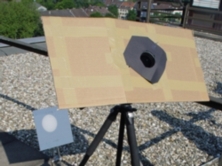 |
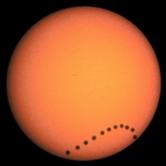 |
|---|---|---|
| using only a pair of solar filters | projecting the sun with field glasses |
looking and photographing through a telscope |
| These pictures have been taken during the 2004 transit. | ||
This website describes two international projects of observing, photographing and measuring the transit:
Combinating photos from sites all over the world will make the different distances of Venus and the Sun visible and allow to determine these distances.
Observing of Venus' ingress and egress and comparing contact times precisely measured at distant sites on Earth will allow to derive the distance to the Sun.
In order to participate in these projects nothing else was needed than an exact going clock and a small telescope or binocular, a solar filter (glas or thin metal sheets), a stable tripod and, for project 1, a digital camera of sufficient large equivalent focal length (about 400 mm).
The main goals of these projects have been
The projects described here have been very similar to our transit transit project in 2004.

|
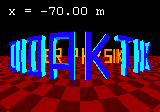
|
Editors: | Udo Backhaus |
last update: last update: 2023-06-07 |

|
Stephan Breil |